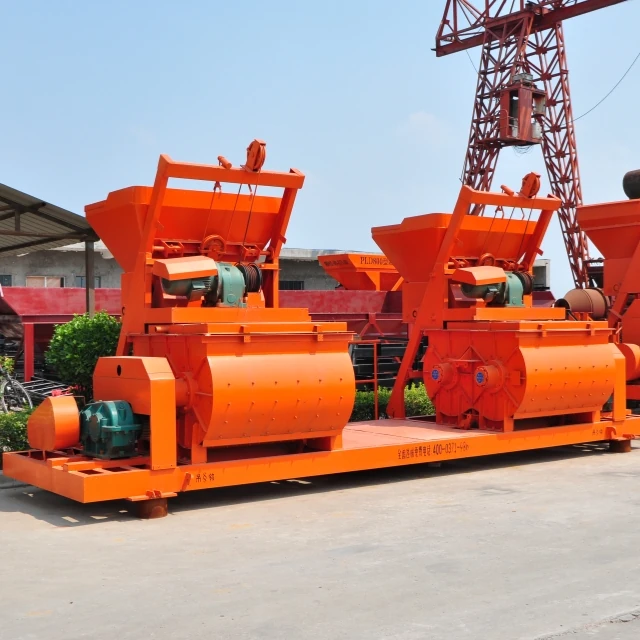Introduction
Selecting and maintaining a concrete mixing plant isn't just about ticking boxes on a spec sheet—it's about understanding how radial runout tolerances influence mix homogeneity or how a corroded silo can trigger six-figure maintenance costs. This guide translates engineering metrics into operational and financial outcomes, backed by industry data and failure case studies. Whether you're procuring new equipment or optimizing existing infrastructure, these insights will help you mitigate risks hidden in technical specifications.
Evaluating Concrete Mixing Plants: Beyond the Checklist
How Radial Runout and Vibration Screens Impact Mix Consistency
Radial runout (deviation from perfect circular motion in mixers) exceeding 0.5mm can cause aggregate segregation, leading to:
- 3-8% cement overuse to compensate for uneven distribution
- Premature wear in mixer blades due to unbalanced loads
Vibration screens with suboptimal mesh sizing or frequency create two costly scenarios:
- Oversized aggregate particles contaminating the mix, requiring reprocessing
- Fine material loss through screens, wasting up to 2% of cement per batch
Ever wondered why some plants report consistent mix quality while others face variability? The answer often lies in these overlooked tolerances.
The Hidden Costs of Measurement System Inaccuracies
Data from batching plant audits reveals four primary error sources:
| Error Type | Financial Impact |
|---|---|
| Technical lag (outdated sensors) | $18–$50/ton in material waste |
| Feeding process gaps | 1.5–3% batch weight inaccuracies |
| Suspension errors (dust particles) | Skews measurements by up to 2% |
| Human calibration mistakes | Adds 15–30 mins/day in rework |
A plant averaging 500 tons/day could lose $200,000 annually from compounded measurement errors—equivalent to the cost of upgrading to modern load cells and automated gates.
Ensuring Long-Term Reliability and Compliance
Cement Silo Quality and Corrosion Prevention Strategies
Silo failures typically originate from:
- Microcracks in welds allowing moisture ingress
- Inadequate epoxy coatings (<200μm) corroding within 3 years
Proven protection methods include:
- Cathodic protection systems extending lifespan by 8–12 years
- Ultrasonic thickness testing every 6 months to detect thinning
Reducer Temperature Standards and Maintenance Best Practices
Gear reducers operating above 85°C signal impending failure. Key maintenance triggers:
- Oil viscosity changes (≥15% from baseline) = Immediate replacement
- Vibration spikes >4.5 mm/s indicate bearing wear
Did you know? Properly maintained reducers can achieve 100,000+ operating hours—double the industry average.
Real-World Applications and Risk Mitigation
Case Study: Safety Valve Failures and Project Delays
A 2022 incident involving stuck pressure relief valves caused:
- 72-hour production halt ($320,000 lost revenue)
- Explosive decompression damage requiring $85,000 in repairs
Root cause: Valve specs didn’t account for humid climate-induced corrosion.
Industry Benchmarks for Belt Conveyor Performance
Top-performing plants maintain conveyors with:
- <2% belt slippage through laser-aligned pulleys
- Roller replacement intervals ≥6 months (vs. 3-month industry norm)
Conclusion: Turning Specifications into Savings
- Audit tolerances first—Radial runout under 0.3mm reduces remixing costs by 40%
- Prioritize measurable ROI—A $15,000 silo coating upgrade prevents $200k in corrosion repairs
- Leverage predictive maintenance—Temperature and vibration monitoring cuts unplanned downtime by 60%
For operations requiring material handling reliability, consider integrating robust winch systems designed for heavy-load precision—a natural complement to high-performance batching plants.
Final thought: In concrete production, every technical specification is a financial variable waiting to be optimized. Which metric in your plant holds the biggest untapped cost-saving potential?
Related Products
- HZS75 Concrete Batching Plant Cement Mixer Price Concrete Mixer Bunnings Mixing Plant
- HZS180 Ready Mix Concrete Plant for Foundations with Sand and Cement
- HZS120 Ready Mix Concrete Batching Plant Commercial Mud Cement Mixer
- HZS35 Small Cement Concrete Mixing Batch Plant
- Construction Products Concrete Plant Machine Mixing Concrete Mixer
Related Articles
- How to Choose Between Concrete and Stabilized Soil Mixing Plants for Optimal Project Performance
- How to Operate Concrete Mixing Stations in Winter: Protecting Equipment and Ensuring Quality
- How to Diagnose, Repair, and Prevent Cylinder Leaks in Concrete Mixing Stations
- Optimizing Concrete Plant Storage: How to Balance Capacity, Compliance, and Costs
- How to Protect Concrete Mixing Stations From Extreme Weather Damage















